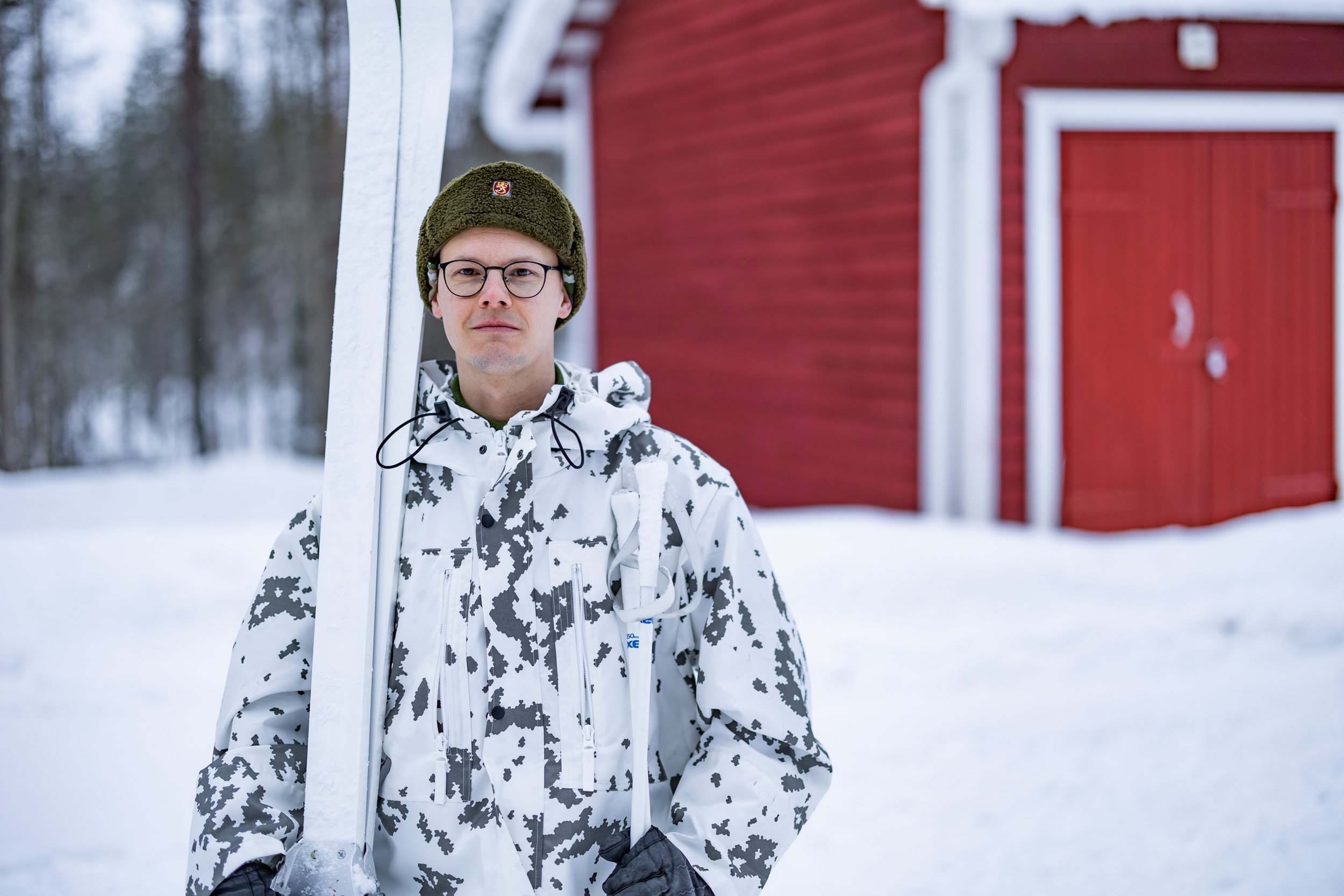Cadet stress and recovery studied in an international research project
The National Defence University is conducting a research project on the stress and recovery of cadets. The study examines stress in cadets caused by the shooting and combat exercise in Vuosanka in January and the impacts that the three-week exercise may have on body composition and physical and cognitive functional capacity.

The study is carried out in cooperation by the Finnish Defence Research Agency, the Education Department of the Defence Command, and the University of Jyväskylä. Four Canadian researchers visited Vuosanka in January as part of the project’s international cooperation with the universities of Ottawa and Montreal, bringing solid methodological expertise and research equipment with them.
According to Assistant Professor Jani Vaara from the National Defence University, stress in cadets has not previously been studied to a similar extent at the Finnish Defence University.
"In previous studies, we have measured heart rate and heart rate variability, among other things, and thus examined how the cadets’ heart and circulatory systems experience stress. This is the first time we are studying this topic this extensively and for this long, and cognitive tests will also bring a multidisciplinary perspective to the examination of functional capacity. In addition, we can utilise the Canadian technology to measure, for example, the temperature of the peripheral parts of the body," says Vaara.
The exercise takes place in winter conditions and challenges cadets in a versatile manner with regard to different stress factors and thus provides an excellent platform for research cooperation.
"The cadets get plenty of exercise during the three-week period, and backpacks and ahkio sledges add a lot of weight to carry. Some cadets may have to prepare shootings far into the night, which also affects the levels of stress and sleep. When the conditions become really cold, you must be able to avoid getting frostbites on your body," Vaara explains.
With the help of the information obtained from the study, the learning skills of the cadets and the effectiveness of the exercise can be improved in future training. At the same time, the volunteer cadets participating in the study can get valuable information on their own fitness, stress, and recovery, among other things.
"Participation in the study also includes an educational aspect. In addition to observing the physiological changes in their own bodies, the participants get information on how they can maintain their cognitive functional capacity in challenging conditions," says Vaara.
Canadian expertise in cold research
Professor François Haman from the University of Ottawa, who spent two weeks at the exercise in Vuosanka, has been studying human functional capacity in extreme conditions for 22 years. His special expertise in cold research contributes to the research project launched in January.
"I am interested in examining the connection between cold tolerance and the structure of the body and its various parts. In the research that I have been conducting over the past few decades, I have noticed that individuals react differently to coldness depending on the weight and size of the body and its various parts," says Haman.
The Canadian partners were able collect detailed data on the cold tolerance of cadets with the technology they brought to Finland.
“We measured the surface and volume of the hand and even the length and thickness of individual fingers using a 3D body scanner. With the help of thermal sensors placed on fingers, toes and the chest, we examined the effects of coldness on different parts of the body,” Haman says.
Haman’s research also emphasises the importance of sleep in extreme conditions.
"Sleep is something that is often ignored when we talk about cold exposure. Sleep deprivation can reduce functional capacity but also weaken the individual's ability to tolerate cold. Therefore, we also monitored the quality of the cadets' sleep through watches on their wrists. We also used sensors to measure the temperature and air quality of the accommodation facilities (CO2, CO, NO2, SO2) and observed how these factors affected sleep,” Haman says.
The ongoing research is the first time Haman is conducting field research on cold exposure in a military environment.
"Winter conditions in Finland were different from those in Canada. I was impressed by how easily the cadets were moving and operating on skis in the forest. Even though the weather was not as cold as expected during the exercise, I can imagine how much winter conditions on site challenged the cadets in the exercise," Haman concludes.



